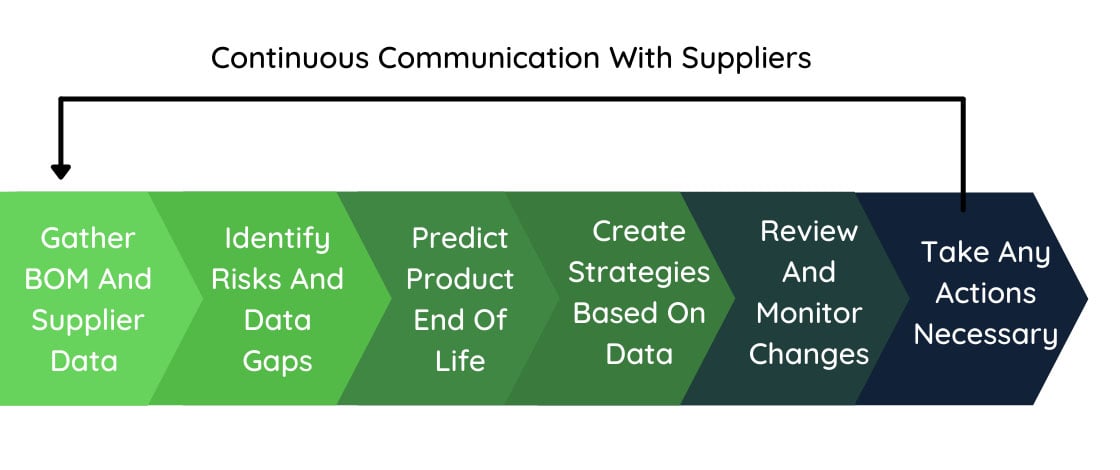Obsolescence Management: How To Mitigate Risks And Maximize Profit
As products’ designs rapidly change to host better performance, faster speed, and improved functionalities, so must the manufacturers that use them. That rush to the latest is enough of a challenge on its own. To make matters worse, even products we expect will have long life cycles can cause profit loss due to unexpected obsolescence.
A product’s life ends when it is no longer needed. New models are coming to market, and manufacturers are phasing out their older portfolios. Many industries are affected by electronic component obsolescence including aerospace and defense, automobile manufacturing, assembly lines, and medical devices. Product life cycles need to be broken down to the smallest component if manufacturers hope to minimize the risks of missing out on improvements while not becoming overburdened with stagnant inventory.
Understanding Obsolescence And End Of Life: Need VS. Use
A product or equipment (or its parts) becomes obsolete when there is no longer a need for it.
As technology improves, older components are replaced by better and more cost-effective substitutes. In many cases, supply and demand dominate the trade and when demand fades, the product moves to oblivion.
Electronics are disproportionately impacted by rapid obsolescence timelines due to the nature of advancing technologies in the industry. Whether on their own or as components of a sophisticated product – say navigation systems, radars, cars, etc - electronic components have a much shorter life cycle than the product they are enhancing because technology innovations happen at the speed of light, or so it seems.
To determine the lifespan of a given product, there are other factors to consider. These include regulatory compliance (chemical or material restrictions), design improvements, environmental concerns (reduction in packaging), etc.
Ultimately, obsolescence can occur while the product is still in use, though demand or usefulness declines.
The Cost Of Obsolescence
Parts carry costs all throughout their life cycle.
Lifecycle costs include:
- Initial design and production of the original products (labor, materials, etc.)
- Production of spare inventory
- Inventory management (storage, handling, depreciation)
- Removal (identifying, transporting, recycling, disposing)
As parts become obsolete, the cost of securing replacement production necessary to maintain a product includes:
- Finding new suppliers
- Validating design and specifications
- Redesigning
Parts obsolescence is unavoidable but should not paralyze operations nor overly mobilize assets. Having inventory management processes in place will minimize risks and accommodate market constraints based on future production projections, maintenance requirements, and part obsolescence forecasts. - Click To Tweet
Obsolescence Management Best Practices
Data analysis will help establish more accurate production projections, system maintenance demand, and obsolescence forecasts. In turn, such regular reports will improve inventory management and prevent costly backlogs.
Process for managing parts obsolescence includes:
- Identify parts that are at risk of becoming obsolete
- Using production and order history to gain turnover visibility
- Keeping communication with customers to identify slow-moving parts
- Maintaining compliance requirements and forecasting the impact on parts in stock and in production
- Planning strategies for replacement, re-design (including functionality improvements), disposal factoring in time, technical feasibility, requalification process, and costs and market trends.
Obsolescence Management With Source Intelligence
Manual processes are cumbersome, unreliable, and resource-consuming. Component obsolescence occurs at an increasingly rapid pace as technology advances and product life cycles shorten. Having the right obsolescence management tools available is the only way to anticipate the inevitable and mitigate the associated costs.
Source Intelligence has developed a solution that bridges the gaps between your operations, regulations, and parts lifecycle. Our obsolescence management platform centralizes and parses data to prevent production delays and avoid costly redesigns.

Our solution includes:
- Bill of Materials (BOM) analysis to identify obsolete parts, duplicate or incomplete part numbers, and mergers and acquisitions potentially impacting production redundancies.
- Predictive impact assessment to identify parts replacement opportunities and flag product change notifications (PCN). Supplier engagement to maintain production status current and keep PCNs, alternate part numbers, and data sheets up to date.
- BOM management to keep pace with engineering changes, component replacement, and environmental compliance impact.
Request a demo of our obsolescence management program and discover how you can start minimizing risks and increase profitability.



